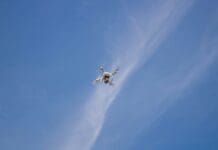This post is also available in:
 עברית (Hebrew)
עברית (Hebrew)
Researchers at Chalmers University of Technology, along with several partners, have developed an optical sensor that can detect record low levels of hydrogen.
The new optical sensor consists of several nanoparticles that work together to detect hydrogen in their surroundings. In previous sensor designs, a large number of samples were produced and tested individually to see which one worked best.
However, with the new sensor, the researchers used advanced Artificial Intelligence (AI) technology to create optimal interaction between the particles, based on their distance, diameter, and thickness. The result of this is a sensor that detects changes in hydrogen concentration that are as small as a few hundred thousandths of a percent.
The secret behind the optical sensor’s low detection limit is the combination of the arrangement of the particles in a regular pattern on a surface and their fine-tuned dimensions. This method worked better for the sensor’s sensitivity when compared to the previous method.
“The technology around hydrogen has taken a giant leap, and therefore, today’s sensors need to be more accurate and tailored for different purposes. Sometimes a very fast sensor is needed, sometimes one is needed that works in a harsh chemical environment or at low temperatures. A single sensor design cannot meet all needs,” stated Professor Christoph Langhammer, one of the main authors of the study.
Original study reported on by Innovationnewsnetwork.com.
Prepared to dive into the world of futuristic technology? Attend INNOTECH 2023, the international convention and exhibition for cyber, HLS and innovation at Expo, Tel Aviv, on March 29th-30th
Interested in sponsoring / a display booth at the 2023 INNOTECH exhibition? Click here for details!


























